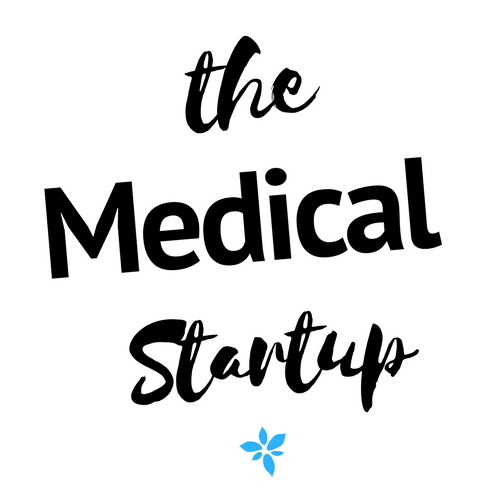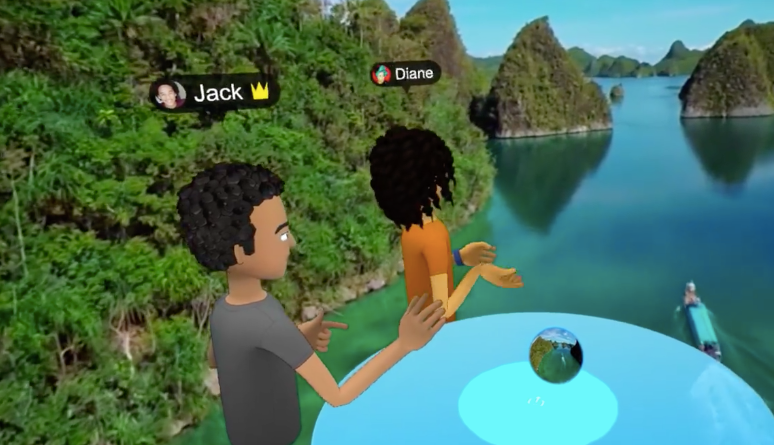Trends for The Future of MedTech: Insights from WGSN's Futures Summit, Melbourne
Note: This event and article was written in 2017. We are extremely grateful to WGSN for the insights and opportunity to attend, and hope you find it useful.
We’re fascinated by trends from diverse industries, and how they impact healthcare. Patients and medical professionals alike are also consumers, and as we all grow more empowered through tech, we’ll find more trends cross-pollinating from healthcare to other industries. Similarly, it’s fun making predictions and seeing how they fare.
We were delighted to attend WGSN’s Futures Summit in Melbourne and learn about their work. WGSN are the world’s leading body for trend prediction and analysis in areas such as fashion, design, activewear and textiles. They crunch data through curated studies across the world, helping brands create products that better serve the world’s consumers.
If you’re planning your next app, wearable, social enterprise or public health innovation, or even considering investing, here are some insights we picked up (and which are coming to fruition as we speak!.
1) The world has shifted from the Experience Economy to the Meaning Economy
Lorna Hall, Head of WGSN Insight, described how we’re shifting to the Meaning Economy, where consumers’ ideal products are selected based on depth of emotion and sense of purpose, rather than the pure functionality or entertainment of previous generations of goods.
This is a reaction to geopolitical instability combined with the growing awareness of tech’s ability to both engage with and isolate users, bringing out more loneliness, stress, and symptoms of mental illness. Meaning is also conveyed through the rise of the sharing economy.
In a practical sense, we see this through products being created not just for entertainment, but for the nurture and care it brings the user beyond immediate experience. Perhaps it’s a reflection of our connected generation, where we’re used to linking with strangers across the world after a tragedy. “(We have) a need for more products that care for us,” explained Ms Hall, and indeed we’re starting to see care being communicated through the language and design of medtech websites, along with the pleasing design of activity trackers and mobile apps. An interesting example was e-skin, printing electrodes onto tattoo paper, creating a simple wearable that can change the volume on your phone, for example, and potentially other functions (we’re imagining being able to trace your ECG through smart wireless electrodes one day!). Meditation and mindfulness apps, some with gamification, are also increasingly part of the Meaning Economy.
2) Experience Design will incorporate Personalisation as part of the Meaning Economy
“There is opportunity in reading emotion,” said Gemma Riberti, the Senior Editor of WGSN’s Design and Product Development division. If you can customise your handbag’s initials or even change the colour of your future car according to your mood on the day, you will be able to curate your own experience in healthcare.
Personalisation also goes beyond reading emotion. Activity trackers and consumer-grade wearable biosensors are evolving to give health reminders when data points (such as high blood pressure) are detected. Consumer-grade genetic testing kits are also gaining popularity as part of the personalisation trend. Additionally, as part of her Wellness presentation, Greer Hughes, Consultant Director of WGSN Mindset APAC predicted the rise of startups based on our increasing understanding of the gut microbiome’s potential effects on physical health and wellbeing. The ethics of generalising test results from “personalised” DNA kits to fit a wide range of customers is an issue to consider when weighing up the benefits of such products, and it’s worth remembering that the Therapeutic Goods Administration and other official bodies help to regulate medical grade versus consumer grade products and devices. (There are also jobs for doctors interested in being part of the TGA approvals process!)
3) The Maker Movement and acknowledging the links between Creativity and STEM produce more healthcare solutions designed by non-healthcare professionals.
We love cognitive diversity, and clearly, WGSN does too. Monash University design student Nathan Huo won the WGSN and Artsthread award, with his app Mindcare storing and retrieving memories (photos and other media) for people affected by dementia. Inspired by his family’s own personal experience through dementia, Nathan also included augmented-reality gaming within the app, serving as a fun and useful memory aid for dementia sufferers that family can enjoy using as well. Collaboration with non-medical creatives will be on the rise as hackathons, co-working spaces and job mobility increase around the world, and we hope events and blogs (like ours :) ) help promote that sense of diverse thinking and wonder. Imagine when design becomes a key part of medical education!
4) People will either fully embrace wellness products or shun them completely
Greer Hughes, Consultant Director of WGSN Mindset APAC, took the audience on a timeline tour of the wellness industry’s growth. Currently, her consensus is that in 2018, people will either fully embrace wellness, or experience an “absolute backlash” towards it. The saturation of news stories and social media posts about superfoods, alternative therapies and wellness retreats likely contributes to this. This poses an opportunity (as ever) for medical practitioners to learn and understand the sentiments behind embracing wellness fads: the fear of the unknown, as a patient; and thus the need to empower oneself and take charge of one’s health, as a consumer. Non-medical consumers clearly want to understand the science behind health trends; it’s when an “us versus them” approach can be permanently harmful to the doctor-patient relationship.
If clinicians take charge by forming medically-sound, evidence-backed wellness apps and products, for example, mindfulness-training apps, then consumers will have more medically-approved choices available. Asking the patient/consumer what they want as a part of human-centred design is a great method to produce multi-user integrated apps such as CancerAid and telehealth platforms such as Lysn.
5) Work cultures are becoming more inclusive and collaborative
Wellbeing at work is transforming employment patterns and work environments around the world. We feel this as a response to higher burnout and stress rates at work; with recent studies across the globe showing a higher number of workers taking sick leave in numerous industries, and the effects of overwork on organisational productivity. Additionally, burnout has been linked to loneliness at work. The growth of coworking spaces and shared work communities such as WeWork will help companies innovate, not only through the value exchanged when a small startup shares office space with Facebook or Hewlett Packard; but also through flexible working policies, and a greater understanding of what drives workplace retention: a sense of purpose (hello, meaning economy!). WeWork Australia’s General Manager, Balder Tol (who was Airbnb Australia’s first employee!) shared the benefits of workplace collaboration, and WeWork’s vision for Australia as it continues to roll out across the globe and acquire other companies such as coding academy Flatiron School. Cognitive diversity is acknowledged when teams share resources across organisations, and build workforces based on diverse educational and cultural backgrounds rather than being of similar skillset and training.
We’re seeing this in medicine as well. Never before has there been so much focus on doctor and clinician wellbeing, and clinicians’ mental health. Creating positive workplace cultures in hospitals and clinics, especially in the fast-paced Acute Medicine world, will help doctors and other healthcare workers feel valued, even through stressful times. Websites like ours (we hope!) help to shed light on the true meaning of being a clinician in the 21st century; the struggles, the highs and lows, the uncertainties, and the humanity and strength that grows from these experiences. It’s incredible seeing how more doctors are feeling comfortable blogging and sharing their experiences, to help bring positive change across the world. We suggest following some of these websites: Dr Eric Levi; Doc2Doc; and no doubt many others around the world.
6) The future of mobility and smart cars in healthcare
Nissan Australia’s Managing Director, Stephen Lester gave an inspiring talk about Nissan’s vision that helped us think about the future of mobility in healthcare. Autonomous driverless cars will help ferry time-critical goods such as blood products and organ donations from one place to another. And how about the impact of the Internet of Things (IoT) on a car’s function, perhaps being able to monitor a passenger’s medical devices and biometrics while on the go?
7) As more of Facebook’s VR and AR functions are released, new and existing startups will pivot to include these in their products and marketing strategies.
Facebook’s APAC Head of Tech and Telecom Strategy Jason Juma-Ross gave attendees a sneak peek at some of Facebook’s and Hololens’ innovations, due for rollout in 2018, including augmented reality integrated into the News Feed. We’ve seen VR headsets being adopted by the mass market, and Facebook creating VR Spaces and developing its Messenger and Live capabilities. Facebook Messenger is already being used by chatbots to help triage and support users facing mental health problems. Imagine how AR will be able to enhance that communication.
Further Reflections: Cybersecurity and Ethics
We all know that AI, augmented reality and VR will mature and become more widely adopted by consumers. Security is the concern as users increasingly want more, now, and connected devices gradually outnumber consumers in 2018, with businesses scrambling to please customers as fast as they can. If IoT devices like smart fridges or Amazon Alexa can be hacked, and retail outlets reportedly use facial recognition to track shoppers’ behaviours, more needs to be done to protect the public. Participating in cybersecurity and ethics discussions at a local level, or even at an Elon Musk-level, will help consumers make safe and meaningful choices when pursuing good health and wellness.
Thank you to WGSN for providing The Medical Startup with a media pass, and to Jennifer Callegari for her help coauthoring and editing this article.

